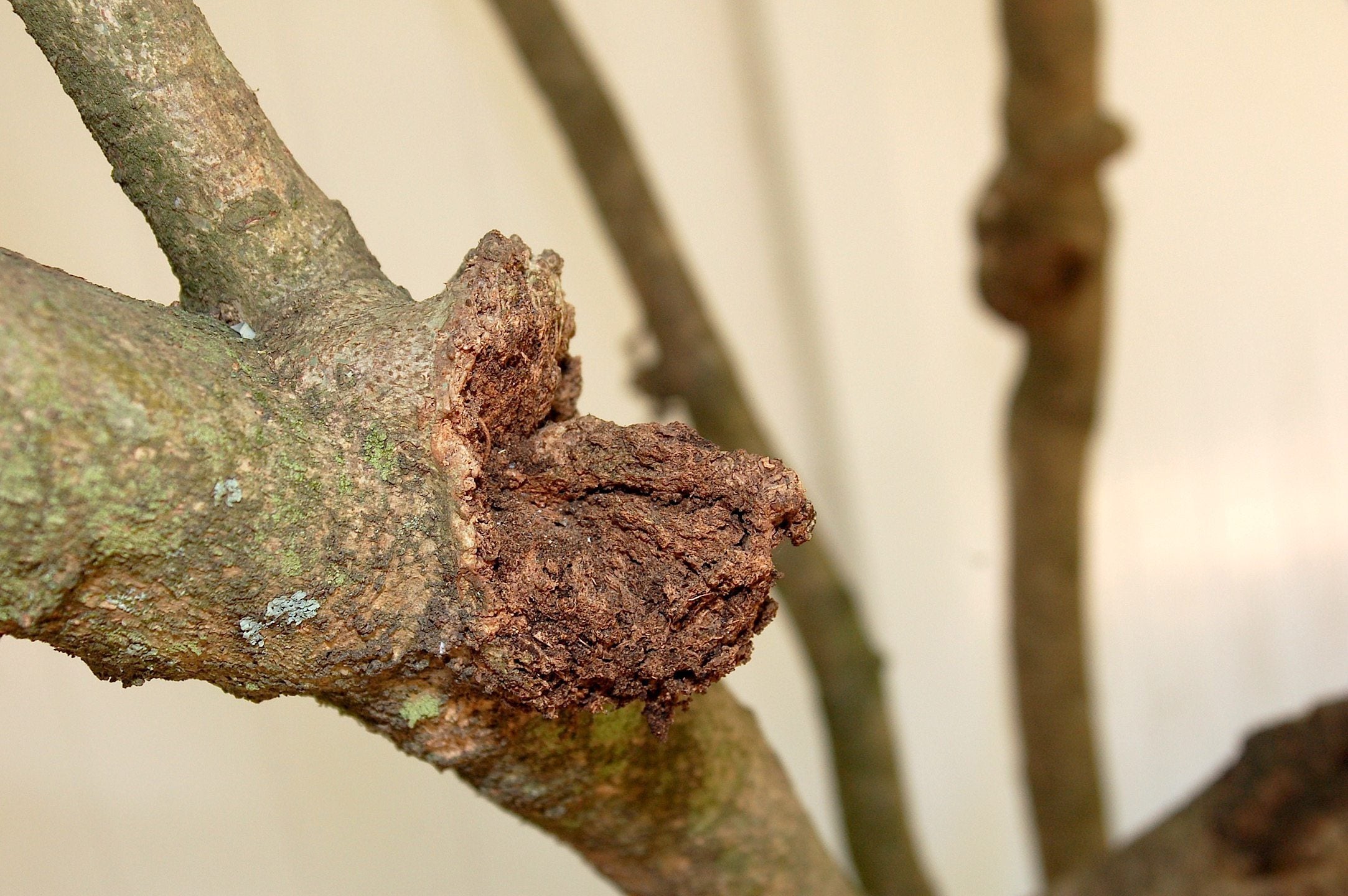Stem Canker Of Gardenia Plants: Learn About Gardenia Stem Canker And Galls


Gardenias are beautiful, fragrant, flowering shrubs that are especially popular among gardeners in the southern United States. Although they are very attractive, they can be somewhat high maintenance to grow, particularly because they can be susceptible to several serious diseases. One such disease is stem canker. Keep reading to learn more about canker and galls on gardenia stems.
What is Stem Canker of Gardenia?
Stem canker of gardenia is a problem caused by the fungus Phomopsis gardeniae. The cankers themselves begin as dark brown, oval shaped spots that run longitudinally (perpendicular with the ground) along the stem of the plant. Sometimes, these spots are sunken with a sharp edge. With time, the spots harden and crack open. On occasion, they form into galls, swollen areas on the stem. Gardenia stem galls are also symptoms of the Phomopsis fungus that develop when there are several cankers in the same spot. Gardenia stem canker and galls tend to appear at the base of the plant’s stem, near the soil line. The stem directly above the cankers and galls might change color from its usual light green to bright yellow. It’s also possible for these symptoms to be found on the plant’s leaves and roots. Canker and galls on gardenia stems cause the plant to become stunted and eventually die.
How to Treat Gardenia Stem Canker and Galls
The Phomopsis fungus enters gardenia plants through wounds in the tissue. Due to this, the best way to prevent gardenia stem galls and canker is to avoid damaging the plant. If any part of the plant becomes damaged, prune it away. Avoid stressing the plant by maintaining a steady water and feeding regimen. If a plant becomes infected, remove and destroy it. The fungus spreads through humidity and moisture and can survive the cold of winter inside the plant. Plant new gardenias in a different location.
Gardening tips, videos, info and more delivered right to your inbox!
Sign up for the Gardening Know How newsletter today and receive a free copy of our e-book "How to Grow Delicious Tomatoes".

The only child of a horticulturist and an English teacher, Liz Baessler was destined to become a gardening editor. She has been with Gardening Know how since 2015, and a Senior Editor since 2020. She holds a BA in English from Brandeis University and an MA in English from the University of Geneva, Switzerland. After years of gardening in containers and community garden plots, she finally has a backyard of her own, which she is systematically filling with vegetables and flowers.
-
 Get Ready For A Summer Of Hummers! Grow These Full Sun Hummingbird Plants and Flowers
Get Ready For A Summer Of Hummers! Grow These Full Sun Hummingbird Plants and FlowersIf you’re lucky enough to enjoy a sunny backyard, make sure you are maxing out on your pollinator opportunities and grow these full sun hummingbird plants and flowers
By Tonya Barnett
-
 12 Lush Alternatives To A Lawn For Sustainable Spaces
12 Lush Alternatives To A Lawn For Sustainable SpacesAlternatives to a lawn are beautiful and also beneficial to your local ecosystem and its pollinators. Explore our top picks for plants to replace grass.
By Tonya Barnett